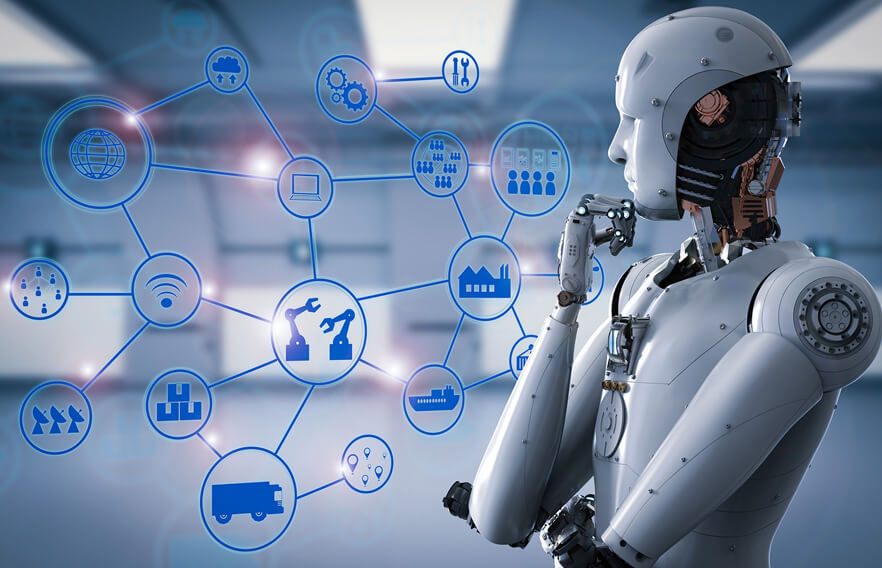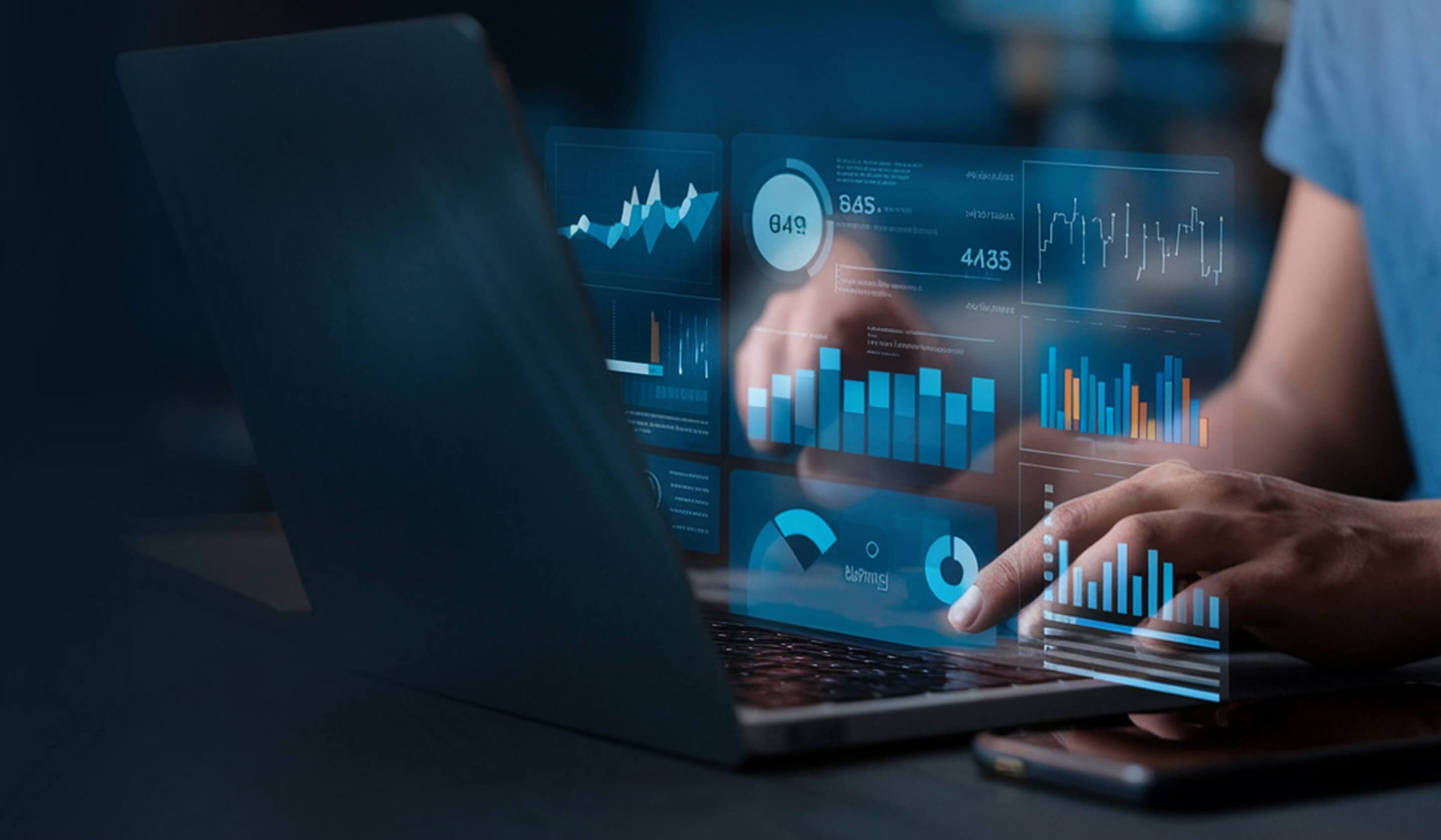If you are a sci-fi geek, Isaac Asimov’s books based on a world of human-like Robots would be familiar to you. With several robot manufacturers expanding their operations, human-like robots, also known as Humanoids, may no longer be confined to our imagination. Hanson Robotics, developers of one of the most famous humanoids, Sophia, has plans to mass-produce thousands of humanoid robots in 2021 for application in the healthcare sector1. COVID-19 has accelerated the need for such robots, especially in the healthcare, retail, and hospitality industries, to reduce infection risk.
The World Robotics 2020 Industrial Robots report2 shows a record of 2.7 million industrial robots operating in factories worldwide.
Robots are here to stay.
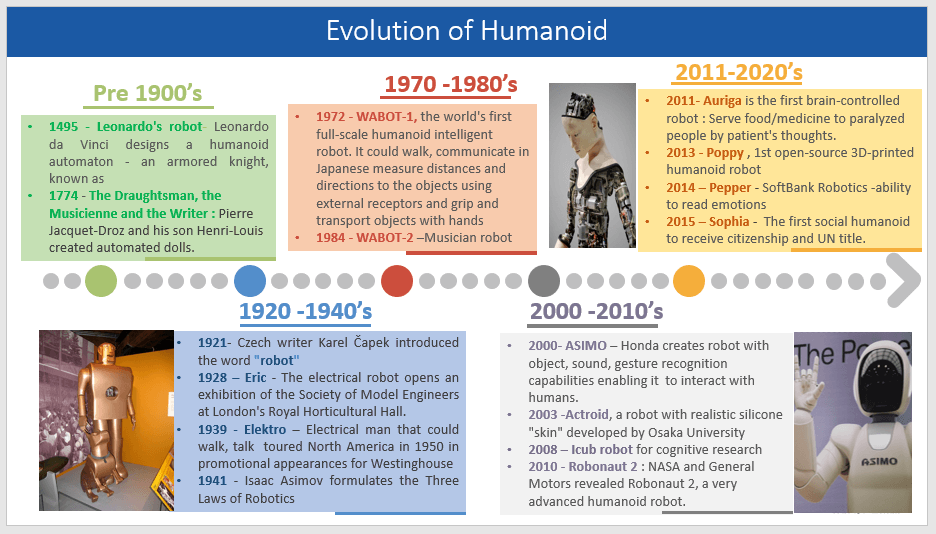
Role of AI and ML in Humanoid Evolution
In humanoid evolutions, the technological advancements in AI, NLP, and ML resulted in significant improvement in the subsequent generation of robots. Some aspects where AI and ML play an important role in the current generation of Humanoids are as follows:
Robot Vision
Robot vision was a concept that was developed between 1980-1990. In Robot Vision, a robot is programmed to “see” as humans do and interact with objects through two steps:
- Imaging: Scan 2D/3D things through the cameras installed in the robot.
- Image Processing: Post imaging, the robot processes the image using AI/ML algorithms such as the boosted cascade classifiers, dictionary-based object detection algorithms, and Convolution Neural Networks.
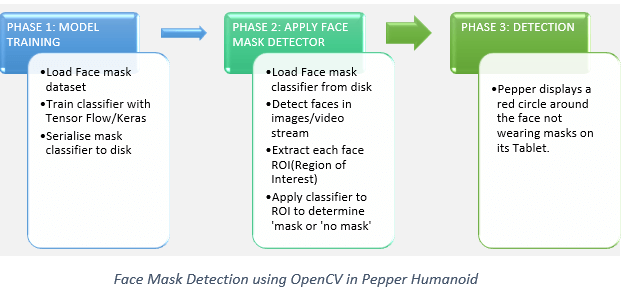
Face Mask Detection using OpenCV in Pepper Humanoid
Mask detection feature in Pepper, SoftBank’s humanoid, enables scanning up to five faces in a group to identify if they are wearing a mask or not3. To get the algorithm used by Softbank, click here.

Imitation learning was used to train robots back in 1999 and is now a part of reinforced learning. It is similar to observation learning, through which infants learn how to do activities by observing adults. In imitation learning, a robot is trained to perform a task from demonstrations, which forms the training set, and by learning a mapping between observations and actions. It then mimics the actions it sees in the demonstration to achieve the final goal. Imitation learning has played a significant role in enhancing robots’ motor abilities and decrease human supervision. Some of the exciting development with the application of Imitation Learning are as follows:
- Da Vinci System4: Learning how to stitch fake human wounds with 85% accuracy by watching videos of surgery techniques opens doors for robots in surgery. Robots will handle repetitive tasks freeing up time for surgeons to focus on more crucial tasks.
- Enable a Robot to learn a language5: In a 2018 conference, MIT researchers spoke about a parser learning language structure by observing captioned videos. The robot associates the words with recorded objects and actions. Given a new sentence, the parser could then predict a sentence’s meaning without the video accurately.

Self-Supervised Learning enables robots to create their own training sets to improve their performance. With Self-supervised learning, robots can scale large amounts of unlabeled data in a lifelong learning manner and reduce dataset bias. It finds its application in anomaly detection, object identification, avoiding obstacles, learning to do new tasks, etc.
An example is the Watch Bot developed by Cornell and Stanford researchers6. It uses a 3D sensor, a camera, laptop, and laser pointer to detect ‘normal human activity’. It then uses a laser pointer to target the object as a reminder (for example, the milk left out of the fridge) and had successfully reminded humans 60% of times on activities they may have forgotten. The researchers had expanded trials by allowing its robot to learn from online videos.

A multi-agent system is a computerized system composed of multiple interacting intelligent agents that can solve difficult or impossible problems for an individual agent. Multi-agent learning enables robots to work as a team and learn from each other. An interesting example of the application of multi-agent learning is in the field of defense.
CAIR (Centre for Artificial Intelligence and Robotics) has been developing a Multi-Agent Robotics Framework (MARF)7 to equip India’s armed forces with an array of robots that can work together for many military applications like surveillance, rescue, and mapping operations. This will enable collaboration amongst a team of various robots the Indian Army has already built — Wheeled Robot with Passive Suspension, Snake Robot, Legged Robot, Wall-Climbing Robot, and Robot Sentry, among others.
An event that shows MARL application in Robots is RoboCup8, which holds competitions like Robocup Soccer, Robocup Rescue, and Robocup Industrial. Robots are teamed up and compete as teams against one another to win.
Scope of Humanoids and Robots in Various Industries
Healthcare
A prime example of how robots and humanoids are used in healthcare was during the peak COVID-19 pandemic in the Wuhan Wuchang Smart Field Hospital9. The hospital was converted to a robot-run field hospital for COVID-19 patients and had the following features:
- A thermometry system to check incoming patients’ temperature and alert medical staff in case of fever symptoms
- Robots to guide patients with hospital admissions and provide the necessary information
- Delivery robot to supply food, medicine, and supplies to patients and droids to disinfect floors
- A HARIX AI Platform to monitor patients’ vital signals through smart bracelets and rings worn by them, allowing healthcare workers to monitor their vital information remotely
In short, the hospital was automated to a large degree to decrease the burden and risk of infection for health care workers. The facility and its robots are now on standby in case there’s a resurgence in cases.
Some of the other roles that robots have undertaken and can continue doing to assist in healthcare during a pandemic are as follows:
- Telepresence and Mask Detection: Pepper has helped with telepresence to connect families/doctors to those infected and in shops to maintain social distancing during the pandemic10.
- Disinfection – Robots like Xenex robots help with disinfecting wards using UV rays11
Agriculture
World Food Programme estimates an 82% growth in people with acute food insecurities between 2019-2020 across 79 countries. The COVID-19 protocols directly impacted the farmers, preventing them from accessing markets, buying inputs, selling their products, and getting required labor to assist with plowing, maintaining, and harvesting farmlands. As a way forward, many countries and farmers are looking towards robotics to help in Agriculture:
- Automated Harvesters: Marom Orchards fruit farms have been using drones by Tevel Aerobotics Technologies that uses AI to identify and pick ripe fruits12.
- Weeding Robots: Château Mouton-Rothschild has partnered with Naio Technologies to enlist Ted, the company’s vine-tailored robotic weed killer13.
- Autonomous Farms: Iron-Ox has an 8,000-square-foot space farm field run that uses two cloud-connected robots to oversee the growth of leafy greens and herbs grown inside heavy hydroponic pods. They had been able to sell their crops to market in San Carlos13.
Hospitality
Due to COVID – 19, some restaurants/retailers started using humanoids and robots for various purposes, such as the following:
- Robotic Kiosks – In December 2020, Blendid and Jamba debuted a robotic kiosk where customers can order customizable smoothies on an app14. The smoothies are prepared and served by a robot.
- Room Service, Bartenders, and Servers – MSC Cruises plans to use a humanoid robot bartender in their cruise15. In Sandton district, Africa, Hotel Sky uses three automated attendants – Lexi, Micah, and Ariel, to provide room service and observe guests’ facial expressions to understand their satisfaction with the service provided16.
- Robot-powered restaurants – Qianxi Robot Catering Group opened a robot-powered restaurant complex in the city of Shunde in China’s Guangdong province16.
Humanoids and Robots similarly find much use in areas of defense, surveillance, monitoring, and education.
Limitations of Humanoids
While robots have advanced a lot in the past decades, they have some drawbacks:
- Expensive: Humanoids are not affordable to a larger population. E.g., The price of Pepper robot is about $1,500 per robot 17.
- Need supervision and maintenance costs: Most robots still need supervision, and most of them require regular maintenance. The cost of upkeep is high.
- Inability to adapt quickly to circumstance: A robot is not ideal for social interaction or a dynamically changing environment. For example, in the case of autistic children, where a human being will quickly change their tactic based on the child’s reaction, a robot will not be able to do so without human supervision or command18.
- The unpredictability of AI/ML – Robots are machines and don’t have a moral compass, feelings, or attachment. Thus, their activity is centered around the end goals. Scientists have observed that through AI, newer and more innovative solutions to a problem can be found. However, as we move towards self-supervised learning and AI robots, more control must be brought in to ensure their actions keep human safety in mind.
- Influence of Bias on ML/AI– Since most robots are trained based on data in the real world, the bias that comes with the same also impacts it. Recent research shows that a face recognition algorithm could not detect an African American woman, with 80% of images being white persons and 75% being male19.
- Security and Data Privacy: As more and more robots are listening and analyzing data, data privacy concerns also increase. Cybersecurity firm Check Point had provided a research-based observation in 2020 regarding Alexa being vulnerable to hackers20.
- Safety. In early 2017, a robotic arm struck and killed a worker from Michigan21. There is a need to regulate robots’ learning, have clear installation, servicing, and maintenance protocols, prevent counterfeits, train humans to work with robots, and vice versa and identify potential issues.
Humans, Humanoids and the Future
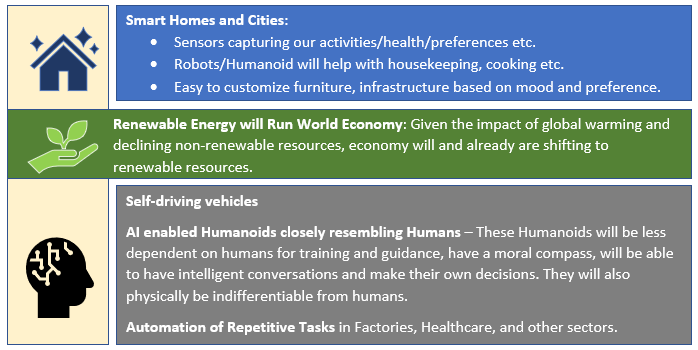
As we advance towards the future, we look forward to humanoids and robots evolving further and finding broader applications as they become more affordable to the more significant population. Contrary to the belief that robots will take away our jobs, it’s fair to say based on the developments that humanoids and robots will help automate repetitive jobs. This will allow humans to focus on more complex tasks and create more jobs. Humans would need to monitor robots, utilize big data for more insights on the world around them, forecast the future, and pursue their interests and hobbies.
Reference Links
2. https://ifr.org/ifr-press-releases/news/record-2.7-million-robots-work-in-factories-around-the-globe
3. https://www.softbankrobotics.com/emea/en/blog/news-trends/new-feature-pepper-mask-detection
4. https://arxiv.org/abs/2006.00545
5. https://dspace.mit.edu/handle/1721.1/118036
6. http://ai.stanford.edu/~asaxena/papers/watchbot_icra2016.pdf
8. https://rescuesim.robocup.org/research/publications/
12. https://www.weforum.org/agenda/2021/02/flying-ai-robot-harvest-fresh-fruit/
13. https://builtin.com/robotics/farming-agricultural-robots
17. https://bots.co.uk/pepper-robot-price/
18. https://www.wired.co.uk/article/autisim-children-treatment-robots
19. https://www.nytimes.com/2018/02/09/technology/facial-recognition-race-artificial-intelligence.html
20. https://research.checkpoint.com/2020/amazons-alexa-hacked/
